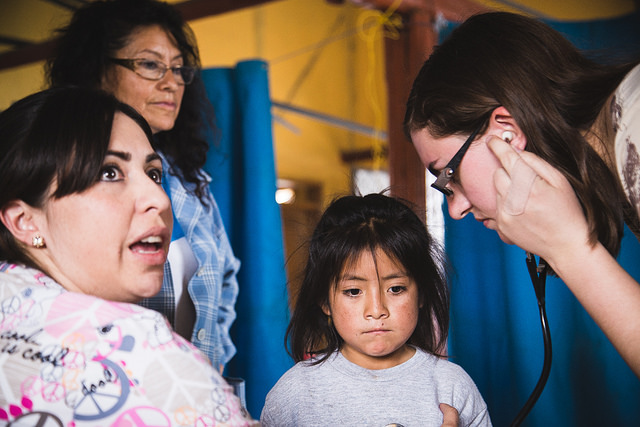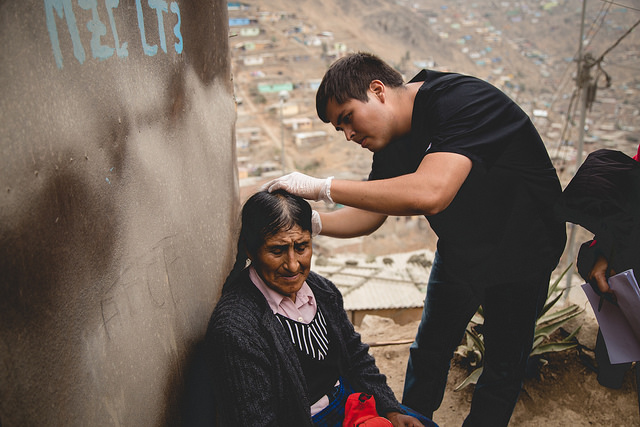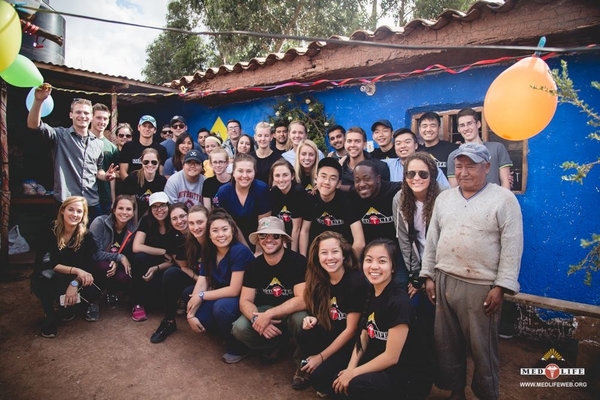Voluntourism and medical missions have been heavily criticized both in the media and the academic community, and for a good reason: they often ineffectively funnel valuable resources and time into a trip that ultimately serves the participants instead of the community they set out to help. Simply put, one cannot effectively solve the complex and immense problems in global public health in a country and culture they do not know in a few weeks time. Progress in global public health is made on the timescale of years, not days.
Maya Roberts of Yale University summarizes the problem well in her critique of medical missions and what she calls “Duffle Bag Medicine.â€
“I spot a young man, at most 19, smoking a cigarette, and leaning against the makeshift frame that converts the backs of pickups into the primary form of public transportation here in Guatemala. He is not a licensed medical professional; he is an American on vacation and he is about to distribute medication to patients… He has confidently slung a stethoscope around his neck, proclaiming an ability to provide medical care, an assertion that is at best questionable. He is from a small US town; all he needs to do to be part of this transient medical team is to finance his flight to Guatemala. He freely donates his time and energy, but he delivers “care†without the appropriate training, without knowledge of the predominant language, and without any clear accountability… This young man and his group are genuinely proud that they spend their vacation here and are especially proud of their contribution. I worry that this pride prevents them from acknowledging that their actions may actually be harmful and do not necessarily address the complex needs of this community. Their short-term work is not integrated into a local infrastructure. Health promoters—local men and women trained to recognize serious ailments and to treat minor ones—are not introduced to these groups. Public health and preventive measures are not part of the overarching goals for the transient clinics; this inhibits the project’s long-term potential and puts the community at risk of receiving inappropriate care.â€
MEDLIFE has taken the medical mission voluntourism model and fixed it by addressing these important critiques. We have local staff permanently based where we work who keep checking in with patients and build long-term relationships with communities to make sure that the valuable contributions made by volunteers on their trips are properly directed and able to accumulate into a lasting and sustainable change.

Sometimes, on a Mobile Clinic, you really can just give a quick treatment and create a profound impact on a patient’s life. When a kid comes in with a bacterial infection or a parasite, pulling some antibiotics out of a duffel bag makes a big difference. However, being able to help that small number of easy patients isn’t good enough when many people who come into our clinics face much more serious and chronic problems.
When someone comes in with serious complications caused by diabetes, malnutrition, high blood pressure, or a tumor, things are more complicated. Sometimes on clinic, we run out of diabetes or high blood pressure medication and our volunteers are initially dismayed. MEDLIFE founder Nick Ellis explains that, in the end, it matters very little if we hand out a month’s supply of a diabetes medication. The impact on their overall prognosis will be negligible and the odds that they get more of the medication if they weren’t already taking it are slim. What really matters is that we found this patient.

MEDLIFE works with local health care professionals instead of trying to replace them. Our Mobile Clinics use local doctors, this allows us to provide culturally appropriate care and provides greater opportunities for cultural exchange and for our volunteers to learn about how healthcare is practiced in the developing world.
Our follow-up program utilizes the parts of the existing local healthcare infrastructure whenever possible, so we are working together with local care providers. For example, the Peruvian health care system pays for tuberculosis treatment. The problem is that patients are often unaware that this is available to them and do not know how to access it. This is compounded by the well-known problems with proper adherence to tuberculosis treatment; medication must be taken regularly on a tight schedule or patients risk developing drug resistant TB, which is harder to treat and must be treated with medication that causes more severe undesired side effects. When we encounter a TB patient on a mobile clinic, we have our nurses visit them in their home and walk them through accessing the free treatment option, and often accompany them to their appointments. They continue visiting the patients in their homes to make sure they are following proper protocol.
We build a lasting relationship with communities; bringing clinics back to the same communities year after year to continue to address the root causes and allow our impact on the community’s health to accumulate over time. MED Programs staff was initially concerned when they noticed that the number of women coming in for Pap smears had dropped dramatically in communities we had been visiting for years. However, after speaking with community members, they realized that this was actually an encouraging indicator that our educational approach was working; the women had simply started going in for yearly pap smears on their own after learning about the importance of the screening in our clinics.
We give our volunteers an opportunity to be a part of our long-term bonds to communities and patients. Volunteers often go back and fundraise for projects and patients that they encountered on their mobile clinics. Sometimes, that chapter is able to be present for the inauguration of a project they fundraised for. When that is not possible, we update them with videos and photos showing them where their hard work went and explaining why we need to fundraise to do a specific project or patient.
Voluntourism is a massive industry worth an estimated $2 billion with 1.6 million volunteers annually and it continues to grow. It is not going away. Despite shortcomings in results, it provides life-changing educational experiences to young students every year, fostering cultural exchange, a sense of global community, and inspiring young students to continue working to solve the problems they are exposed to throughout their careers. MEDLIFE has taken the broken model and fixed it. MEDLIFE Mobile Clinics and our patient follow-up program use a unique approach that ensures that the good intentions and hard work of volunteers produce life changing and sustainable results in the communities we work in, results our volunteers can be proud of.


